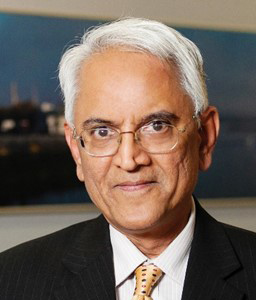Non-alignment was a Cold War effort to retain the autonomy of policy between two hostile politico-military blocs.
Foreign media covering Prime Minister Modi’s recent landmark visit to the United States frequently mentioned non-alignment as inhibiting India’s closer engagement with that country. It is a misconception widely prevalent even in Indian media, academia and political circles.
Non-alignment was a Cold War effort to retain the autonomy of policy between two hostile politico-military blocs. The Non-Aligned Movement (NAM) provided a platform for newly independent developing nations to collectively protect this autonomy.
For quite a few years now, non-alignment has not been projected as a tenet of India’s foreign policy. Back in 2019, External Affairs Minister Jaishankar said publicly that non-alignment was a concept “for a specific era and a particular context”. Departing from an almost unbroken decades-old tradition of Indian prime ministers attending NAM summits, PM Modi has not attended either of the two summits held during his time in office.
Once freed from the shackles of the Cold War, countries were able to diversify their network of relationships across the erstwhile East-West divide. Non-alignment lost its relevance, as interests diverged and partnerships were recast.
In the wake of the diverse responses across the developing world to the war in Ukraine and sanctions on Russia, the idea has emerged in the western media of the “new non-aligned”—a group of countries across continents, political systems and alignments that “have sat on the fence on the Ukraine war or wish to remain non-aligned in the Sino-American confrontation, or both”. The Economist analyses the behaviour of 25 developing countries with the biggest economies, from “giant India” to “tiny Qatar”. Collectively, they are powerful, because they represent 45% of the world’s population and 18% of global GDP—more than that of the European Union. They favour “minilateralism”—small groupings to promote focused interests. These “middle powers” are described as “brutally pragmatic” and opportunistic in the pursuit of their desired objectives.
There is validity in the argument that much of the developing world believes its interests are not served by great power conflicts and tensions. But it would be inaccurate to see the “new non-aligned” as a grouping with common goals or perspectives. Their interests and alignments are disparate.
Globalisation facilitated the free movement of people and goods. The technology revolution facilitated real-time transfers of ideas, information and money. They enabled many countries to leapfrog stages of development and attain levels of political stability, economic growth, military strength and cultural integration that fuelled their ambitions for greater regional and global influence. The post-Cold War geopolitical flux provided a conducive environment for risk-taking.
The line between pragmatism and opportunism is fuzzy. India ignored western sanctions and increased imports of Russian oil at discounted prices, arguing that its first responsibility was to protect its economic growth by securing cheap energy. Criticism poured in from European countries about India undermining the sanctions. Yet, even while maintaining the pretence that it does not import from Russia, and berating India for doing so, Europe imports a significant proportion of processed Russian crude from India to meet its demand for downstream products.
A third dimension was the tacit encouragement from other Western quarters for India to continue energy imports from Russia to obviate skyrocketing global energy prices. Both pragmatism and opportunism were on display in these dynamics.
The growth of “minilateralism” is a response to the general malaise in multilateral mechanisms. Vested with the task of maintaining international peace and security, the United Nations Security Council has been paralysed by the split among its permanent members. The impact of this split runs through virtually all multilateral institutions, arrangements, treaties and conventions. They reflect an international order in disarray.
This disarray makes it difficult to define and enforce a ‘rules-based’ international system. The concept originates from arrangements that developed after the Second World War, to address global political, economic and security challenges. The rules are embodied in a variety of multilateral institutions, including the United Nations, its organs and agencies, the financial architecture of the Bretton Woods system (the World Bank, IMF and others), international treaties and conventions. For the most part, it is a system created, interpreted and administered by developed countries. With increasing clashes of global and regional interests, adherence to the rules has not been uniform.
Most countries will claim allegiance to a rules-based order, but the interpretation of the rules varies from country to country. They abide by rules that suit their interests and ignore or reinterpret those that do not. The “middle powers” believe that they should have a greater say in framing, interpreting and administering the rules of a new international order. The latest US National Security Strategy recognises this aspiration. It asserts that all nations supporting universal rights and freedoms should have the opportunity to participate in shaping the rules of the international order.
As neither the Ukraine war nor the US-China tension shows any signs of abating, there is no immediate prospect of developing a universally accepted international order. At present, as former National Security Advisor Shivshankar Menon has said, the world is militarily unipolar, the world is militarily unipolar and economically largely bipolar, but politically fragmented.
Foreign policy is shaped by the dynamic interaction of national security imperatives, political considerations, economic capacities and strategic ambitions. An effective foreign policy has to be sensitive to international realities and should seek to shape them, wherever possible. The disintegrating international order and fragmenting multilateralism pose challenges but also offer opportunities. India’s political, economic, geographic, demographic and civilisational attributes have enabled its foreign policy to ride challenges and grasp opportunities. Specific strategies can be analysed in terms of “new non-alignment” or multi-alignment, and “minilateralism” or strategic autonomy. The pertinent yardstick is the advancement of national goals in an uncertain world.










Post new comment